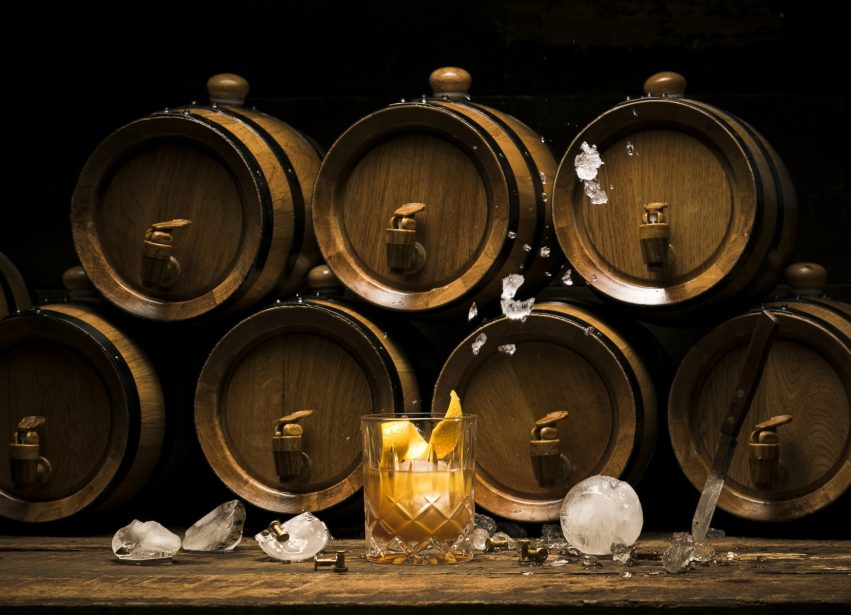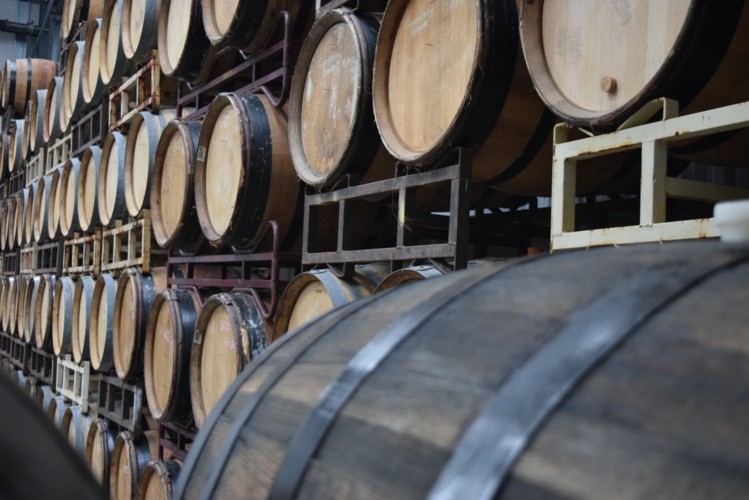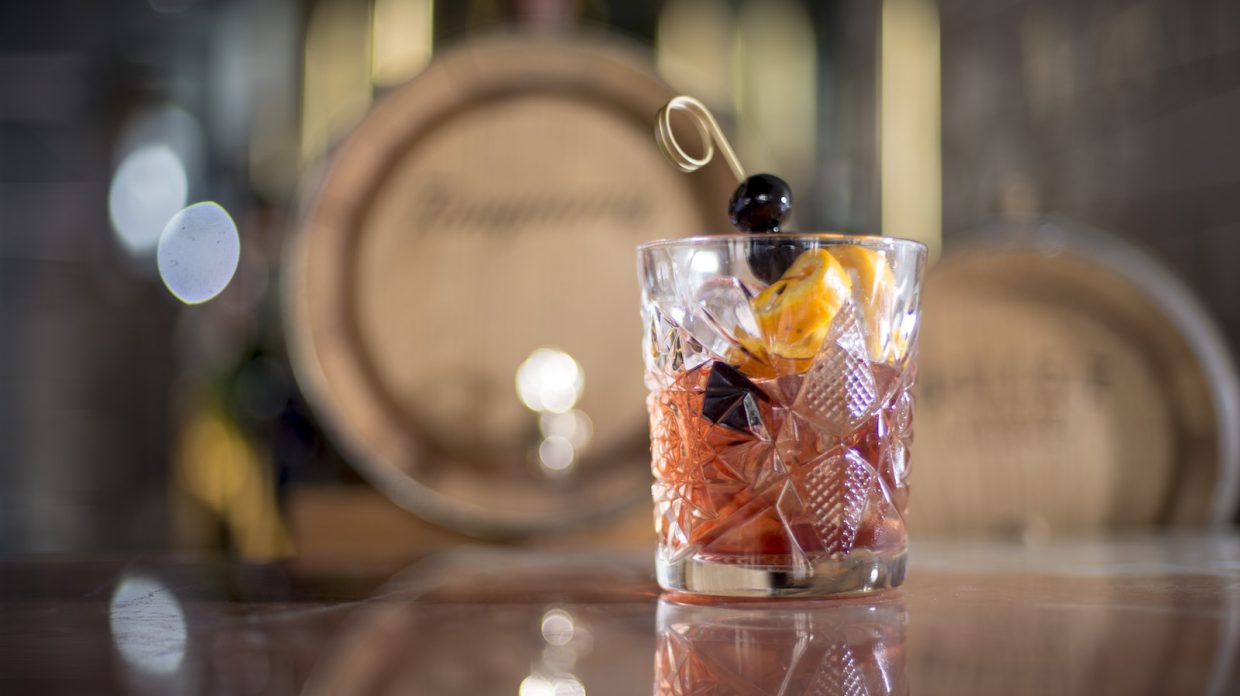What Is Barrel Aging?
Barrel Ageing…that sounds posh! But what is it?
Well, it is oak, time, a lick of fire and a lot of experience and expertise and there ain’t no new-fangled, whizzpopping, shiny stainless steel still, that can compete with the taste it makes!
History – A quick look.
The origin of booze is steeped in myth and misguidance because the history writers all enjoyed one too many samples.
Its widely assumed that the taste benefits of barrel ageing were discovered as a by-product of barrels being useful to store and move liquid. It has been done for thousands of years, potentially, since the bronze age.
The practice has been refined to perfection, combining science and tradition in the hunt for complex flavours subtle enough to be unique, but robust enough to not disappear in the face of high alcohol content or big hitting flavours like malt, rye, wine, molasses and even vinegar and hot sauce!
Why? – What does it do?
Something that has been barrel aged tastes better. Simple.
But why?
This is all to do with how we taste. The mouth can only taste 5 or 6 things, sweet, sour, bitter, salty and umami (umami is the taste of MSG – think cheap takeaway food). The rest of the tasting work is picked up by your nose and your eyes. Your nose can detect thousands of individual flavours, but your eyes play a key role too!
Not so much in the sniffing game but in assessing quality. If this was not the case millions would not be spent on food and drink marketing.
To prove this point further, the colouring agent caramel is added to unaged spirits to make them look aged, tricking the consumers eye into making them think it tastes better. Caramel is used because a by-product of the barrel ageing process is the beautiful golden-brown colour we associate with premium spirits.
To achieve the sensational vanilla, spicy, honey woody nutty yumminess (and I could go on with the flavours) in wines, whiskeys, rums, tequilas, balsamic vinegar, you must barrel age. No amount of post distillation flavour blending, or lab created additives can come close to what is achieved through years in oak, and your nose knows it’s true. To find out more about barrel aged drinks check out our look at the welsh whiskey Penderyn
There is a vast variety in barrel ageing methods. These variables create unique signature flavours and looks that have been sipped for generations and celebrated worldwide. Those signatures are now rooted in the cultural identity of the location of production, think of Scotland and scotch. Think Jamaica and rum. Think France and wine. Think Mexico and mezcal.
How? – Ageing is hard work
Conditions and length.
Hot or cold, humid or dry, all have different effects on the finished product.
Firstly, it is important to understand that there is a difference between age and maturity, especially in wine. Maturity is when a liquid has reached its potential. Age is just a number. It is possible to over-age something and spoil it.
Equally it is possible that something young that has not yet reached its maturity is still a wonderful drink.
The hotter the climate, the more intense the ageing process and the quicker a liquid matures. A scotch has a minimum age of 3 years in oak by law, because Scotland is cold.
Bourbon (American, whiskey) has a minimum age of 2 years because the USA is hotter than Scotland, so it takes less time to mature.
Barrel ageing in Asia (especially the Philippines), the Caribbean and Central and Southern America are referred to as ‘tropical ageing’, in the most part this is used for rum, tequila and some wines (though not exclusively). Tropical barrel houses consistently rotate stock from the top of the building to the bottom as the temperature can vary by 10 degrees within the building as heat rises.
The hotter a barrel house, the more condensation occurs in the barrel – this is known as either the ‘devils share’ or ‘duppies share’ when in Caribbean rum, or the ‘angels share’ more commonly associated with cognac, brandy and whiskey.
Condensation makes the bookkeepers weep because it is wasted product. However, condensation in the barrel is a mark of quality, it is demonstrating the science of the process as the flavour and colour from the barrel are imbued into the liquid.
The size of a barrel is also a factor as the smaller the barrel the more intense the process. The most intense ageing process is in a hot barrel house using a small barrel for a long period. This is no guarantee of quality however, as intensity does not always lead to maturity.
Wood And The Actual Barrel
Despite all the varieties of wood only oak is used for ageing, however there are over 600 different species of oak. No other wood offers the same durability, reliability and crucial tastiness. Coopers (traditional barrel makers) have tested and tested this wood theory over generations.
Fun fact for you, you won’t find any nails in a decent barrel. All the joinery is done through close carpentry and metal rings.
Traditionally there is two main varieties of oak used: French and American. However, European (especially Spanish, Russian and English) and Japanese oak varieties all produce excellent and different results.
American oak tends to be more heavily charred and French oak less heavily charred. American oak has more vanilla and coconut notes and a rich toastiness from the heavier charring. French oak barrels are predominantly used for wine and cognacs as they are very low on tannins, so add a wonderful smoothness to a drink. There are exceptions to all of that and often they are rare and beautiful liquids.
It’s common practice for a liquid to be aged in a second fill barrel. For example, rum may be aged in bourbon barrels to add a corn sweetness or sherry barrels to add dry notes. There is even whiskey aged in beer barrels and it is delicious! The possibilities are endless.
Get Barrel Ageing Yourselves
You’re going to need to spend some cash on a barrel. About £40 -£70 will buy you a 1 litre new barrel. We really like this one
Ensure you cure your barrel first with hot water and remember that small barrels are more intense so the oak you pick up in the drink can be surprisingly strong. Taste it as you go!
Think of this as a long-term project, you will need to experiment to get the flavours you want, so keep good notes, there are no quick gains in the ageing game.
Bar managers….try ageing a good Negroni recipe. It is a real treat and looks amazing when served from a bar top barrel, remember we taste with our eyes too!
Top Tip: between uses never let the inside of a barrel dry. Wash with warm water and leave to rest filled with water. If it dries out then the barrel can become mishapen and leaks can occur…and we don’t want that.
Share
Get In Touch With Our Team
Speak To One Of Our Team Today Get in touch




